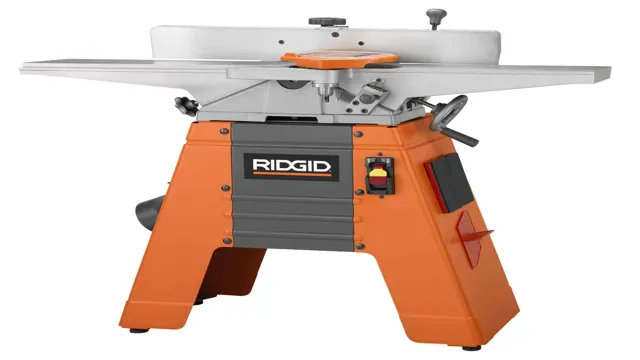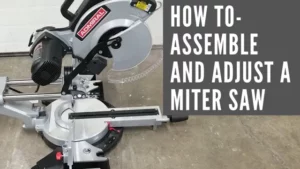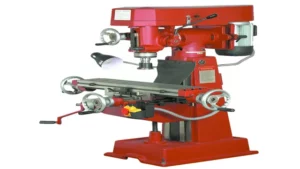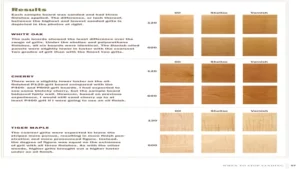If you’re a woodworking enthusiast, you might have come across the terms jointer and planer. While these two woodworking tools are not interchangeable, did you know that you can use a planer as a jointer? Yes, it’s possible! Jointing requires creating a flat surface on the edge of a board, while a planer is used to create the same flat surface on its face. But if you don’t have a jointer in your workshop or you need to save on space and budget, using a planer as a jointer can be a lifesaver.
However, it’s important to note that the technique requires some skill and an understanding of the limitations of a planer when it comes to jointing. So, before you dive in and use your planer as a jointer, it’s essential to learn some tips and tricks to make your woodworking project successful. In this blog, we’ll explore how to use a planer as a jointer, the benefits, and the pitfalls to avoid.
It’s time to roll up your sleeves and discover a new woodworking technique that will take your projects to the next level.
Introduction
When it comes to woodworking, having the right tools is essential. But what if you only have a planer and need to joint a board? Can a planer be used as a jointer? The short answer is yes, it is possible to use a planer for jointing purposes. However, it’s important to note that a planer and jointer have different functions and produce different results.
A jointer is designed to flatten one face and square one edge of a board, while a planer is used to produce a uniform thickness on a board’s surfaces. So while a planer can be used to smooth and straighten a board’s edge, it cannot produce a 90-degree angle like a jointer. Overall, it’s best to use the appropriate tool for the job.
However, in a pinch, a planer could be used temporarily for jointing purposes.
What is a planer, and what is a jointer?
If you’re new to woodworking, you might have heard the terms “planer” and “jointer” thrown around but are unsure of what they mean. Simply put, a planer and a jointer are both tools that are crucial for producing straight and flat boards. A jointer is used to create flat surfaces on the faces and edges of boards before they are glued together.
It uses a rotating cutterhead with blades that shave the wood, resulting in a smooth and flat surface. On the other hand, a planer is used to create boards of even thickness. It has a top and bottom cutterhead that spins and slices off slivers of wood until the board is the desired thickness.
Both tools are essential for generating high-quality and professional-looking woodwork projects.

Advantages and disadvantages of a planer vs. jointer
A planer and jointer are both essential tools when working with wood. Each has its own advantages and disadvantages. A planer is great for making a surface smooth and even.
It is perfect for removing rough spots and ensuring a piece of wood is level. On the other hand, a jointer is ideal for flattening a face or an edge of a board. It is perfect for ensuring that the board is straight and true.
However, it is important to note that a planer is not great for flattening and a jointer is not great for removing rough spots. One advantage of a planer is that it can take off a large amount of material in one pass. This makes it perfect for working with large pieces of wood that need to be trimmed down.
A disadvantage of a planer is that it can be dangerous if not used properly. The blades are very sharp and can easily cause injury. Additionally, planers can be loud and produce a lot of sawdust.
A jointer, on the other hand, is a safer tool to use. It is used to remove a smaller amount of material at a time, which makes it less dangerous than a planer. Additionally, jointers produce less dust than planers, making them easier to work with for longer periods of time.
However, a disadvantage of a jointer is that it can be more time-consuming than a planer. It may take multiple passes to get the desired result. In conclusion, both planers and jointers have their own unique advantages and disadvantages.
Can a planer be used as a jointer?
Many woodworking enthusiasts ask the question, “Can a planer be used as a jointer?” The answer is yes, but with some limitations. A planer is primarily designed to smooth and flatten the top surface of a board, making it thinner and removing any unevenness. In contrast, a jointer is built to create a flat reference, straight edge along the length of a board’s face.
However, some planers come with a jointer attachment that can be used to achieve a straight edge. Additionally, a creative solution is to use a jointer sled that attaches to the top of the board and is run through the planer, allowing the planer to act as a jointer. However, it’s important to note that using a planer as a jointer can cause more snipe and tear outs, leading to more waste material, especially with shorter or thinner boards.
Ultimately, it’s recommended to invest in both a planer and jointer separately for optimal results.
Similarities between a planer and jointer
As both planers and jointers have a similar appearance and function, it’s natural to wonder if a planer can be used as a jointer. While a planer and a jointer have some similarities, they are two different tools with different purposes. A jointer is used for cutting a straight edge on a board’s face and squaring up the edges.
A planer, on the other hand, is used for smoothing and flattening the face of a board. While it may be possible to use a planer to somewhat straighten and flatten a board’s edge, it’s not a good substitute for a jointer. The reason is that a planer isn’t designed to remove a lot of material, especially when it comes to the edge of a board.
Plus, without a straight and square edge to start with, it would be hard to get an accurate cut with the planer. Therefore, it’s best to use a jointer for preparing boards for edge-to-edge glue-ups and then use a planer to smooth and thickness the board.
How to use a planer as a jointer
If you’re wondering whether a planer can be used as a jointer, the answer is yes! Using a planer as a jointer is a handy trick that many woodworkers use to save space and money. A planer can do a similar job as a jointer when it comes to flattening one side of a board and creating a parallel edge. However, you’ll need to add a bit of extra effort and take certain precautions to make sure the job is done right.
One thing to keep in mind is that a planer is not as precise as a jointer, so it’s best to use it only for smaller jobs. Also, you’ll need to use a sled to make sure your board is kept level and avoid snipe. Moreover, you need to use a straight edge to check the flatness of the board before sending it through the planer.
Using a planer as a jointer may not be a perfect substitute for a dedicated jointer, but it’s definitely a useful trick to add to your woodworking arsenal.
Limitations of using a planer as a jointer
When it comes to woodworking, using a planer as a jointer might seem like a convenient option, but it does have its limitations. While both tools are used to flatten and straighten wood, a jointer is specifically designed for this purpose, while a planer is not. The biggest limitation of using a planer as a jointer is that it is difficult to get perfectly straight edges on the boards.
This is because a jointer has a fence that helps keep the board straight while it runs over the blades. Without this fence, it can be challenging to keep the board straight, resulting in uneven edges. Another limitation is the width of the board that can be worked on.
Planers are designed to work on smaller boards, while jointers can handle wider boards. Ultimately, while using a planer as a jointer might be a makeshift solution, it is not a substitute for a proper jointer.
Factors to consider before using a planer as a jointer
Can a planer be used as a jointer? This is a common question among woodworkers looking to save space and money. The answer is yes, but there are some factors to consider before doing so. First, planers are not designed to flatten a board’s face, whereas jointers are.
So, if you plan on flattening a board’s face, it is best to use a jointer first. However, if you already have a flat face and need to flatten the other face or edges, a planer can work well. Second, planers remove a lot of material at once and can cause tear-out, which can ruin your board.
Using a jointer with a light cut before planing can reduce this risk. Finally, a planer’s blades are positioned to cut one way, whereas jointer blades cut in both directions. This means that knives on a planer can leave small ridges in the wood that will need to be sanded away.
Overall, using a planer as a jointer can be a great way to save space and money, but it is important to consider the factors mentioned above to ensure that you get the best results possible.
Blade type and sharpness
When using a planer as a jointer, there are some important factors to consider before you start. One of the most important factors to consider is the type of blades that you are using. You need to make sure that you are using blades that are sharp enough to create a smooth surface for your joint.
Blades that are dull or damaged can cause rough and uneven cuts, which will result in a poorly jointed piece of wood. It’s also important to consider the type of blade that you are using. There are different types of blades, including straight blades, spiral blades, and helical blades, each of which has its own benefits and drawbacks.
The type of blade that you choose will depend on the type of joint that you are trying to create and the type of wood that you are working with. In summary, before you start using a planer as a jointer, make sure that you have the right type of blade and that it is sharp enough to achieve a clean and smooth joint.
Size of the workpiece
When considering using a planer as a jointer, it’s important to take into account the size of the workpiece. A planer is designed to smooth down the thickness of a board, but it may not be able to handle wider pieces that a jointer can accommodate. This can result in an uneven surface or even damage to the machine.
If you are working with larger pieces, it’s recommended to invest in a jointer or consider using a hand plane. However, if you only have a planer, you can still use it for jointing smaller boards by using a sled or jig to keep the piece level and ensure the proper alignment. Overall, it’s important to assess the size of your workpiece before turning to a planer as a jointer.
Amount of material to be removed
When using a planer as a jointer, there are several factors to consider, and one of them is the amount of material to be removed. If the material to be removed is more than 1/8 inch, it’s recommended to use a jointer first before using a planer. This is because jointers are designed to remove excess material from the edges and flatten the faces of the wood board, while planers are designed to create boards of uniform thickness.
Using a planer to remove too much material can result in uneven surfaces, tear-out, and a waste of expensive wood. Additionally, removing a vast amount of material at once can also dull the blades of the jointer. Thus, it’s important to carefully consider the amount of material to be removed and choose the appropriate tool accordingly, to ensure a smooth, even surface and save both time and effort.
Conclusion
In conclusion, it’s like asking if a hammer can replace a screwdriver. Technically, a planer can be used as a jointer in some cases, but it’s not recommended nor efficient. Both tools have different purposes and applications, and while it may seem tempting to save money and space by using just one, it’s always better to invest in the right tool for each task.
After all, you wouldn’t use a whisk to chop vegetables, would you?”
FAQs
What is the difference between a planer and a jointer?
A planer is used to create a uniform thickness on a board while a jointer is used to create a flat surface on the edge of a board.
Can a planer be used as a substitute for a jointer?
While a planer can take off small amounts of material from the edge of a board, it is not recommended to use it as a substitute for a jointer.
How often should I sharpen my jointer and planer blades?
It depends on how often you use them and what type of wood you are working with. As a general rule, blades should be sharpened every 10-15 hours of use.
What is the maximum width of a board that a jointer can handle?
This depends on the size of the jointer, but most can handle boards up to 6 inches wide.
How can I prevent tear-out when using a planer or jointer?
Use a sharp blade and take light passes, especially when working with figured or hard woods. You can also try using a high-quality blade with a higher tooth count.
Do I need a jointer and planer if I am just a beginner woodworker?
While it is possible to get by without them, having a jointer and planer can greatly improve the quality and efficiency of your woodworking projects.
Can I use a hand plane instead of a jointer or planer?
Yes, hand planes can be used as an alternative to a jointer or planer, but they require more skill and elbow grease.







